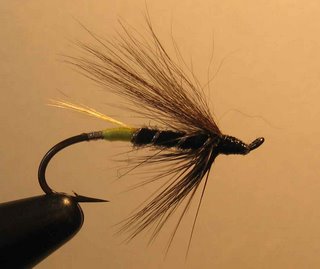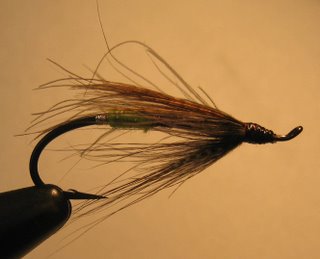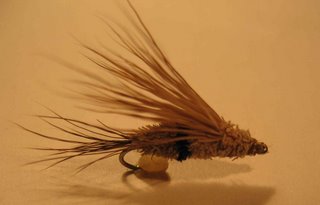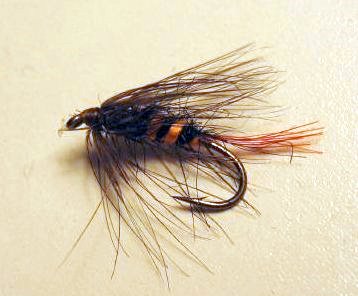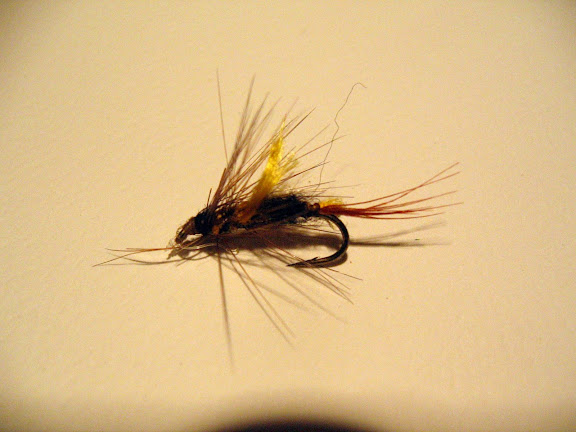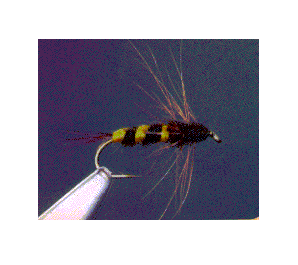LOW WATER/GREASED LINE PATTERNS
The conventional Lady Caroline uses a golden pheasant hackle and bronze mallard wing. The bucktail+grizzly substitutes are used here to provide a buggier appearance, esp. effective in the fall when October Caddis are available.
Hook: light wire, #8
Thread: Claret
Tail: Golden Pheasant crest
Rib: flat silver tinsel
Body: blended olive & brown
Hackle: soft grizzly hen
Wing: fine brown bucktail
Andrew's Black
Hook: light wire, #8
Thread: Claret
Tail: Claret
Rib: flat silver tinsel
Body: Black
Hackle: Black
Wing: fine brown bucktail
Spider Spade
Hook: Partridge CS2 (looped down-eye)
Thread: Black
Tail: fine bucktail
Rib: fine oval silver tinsel
Body: black seal substitute (SLF)
Hackle: teal flank tied spider-style
